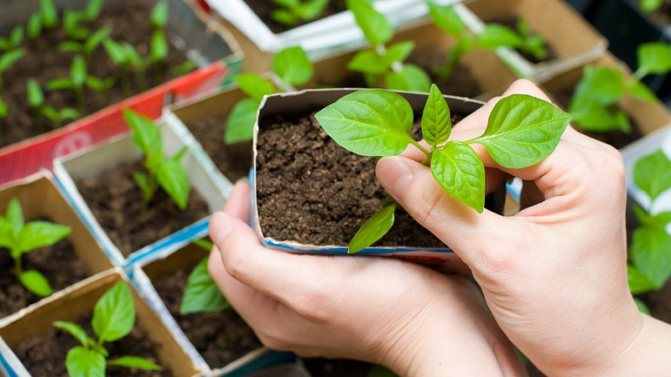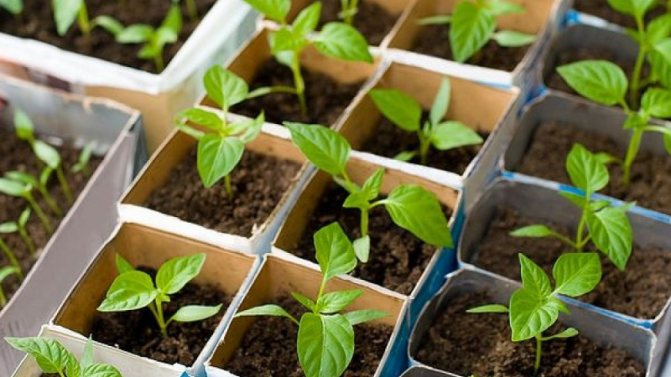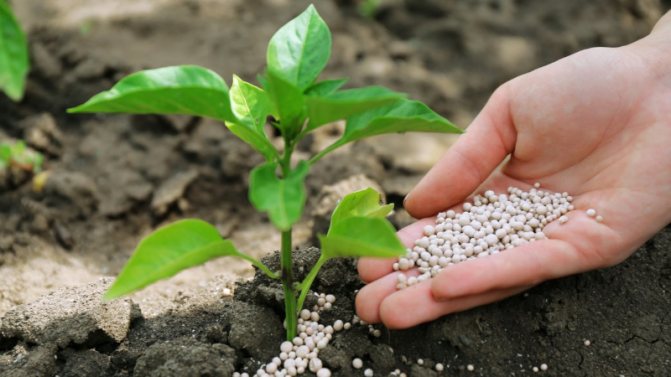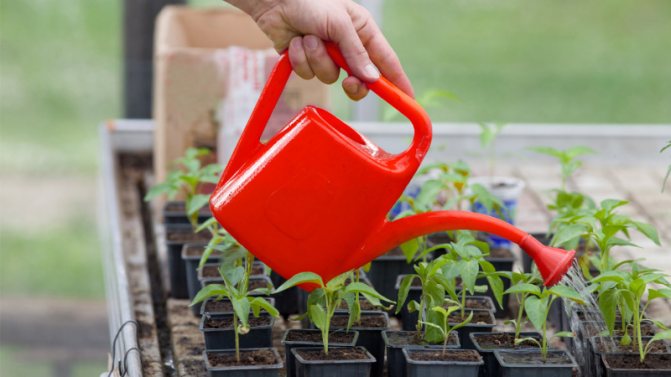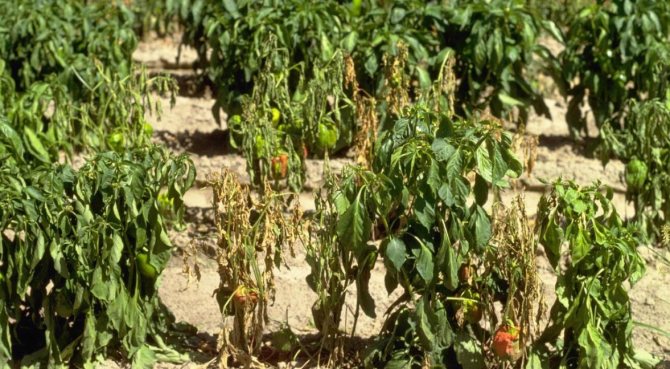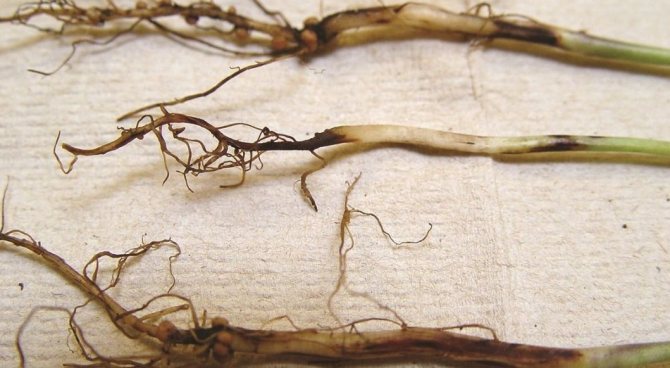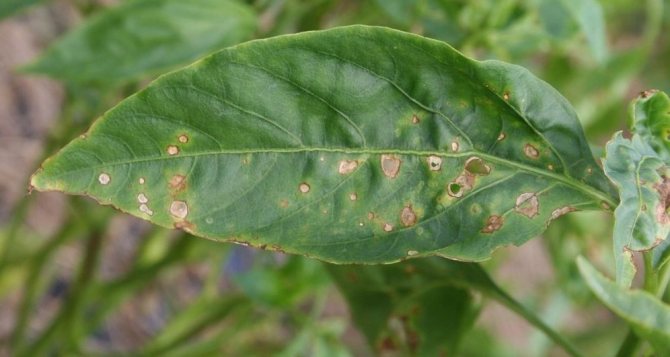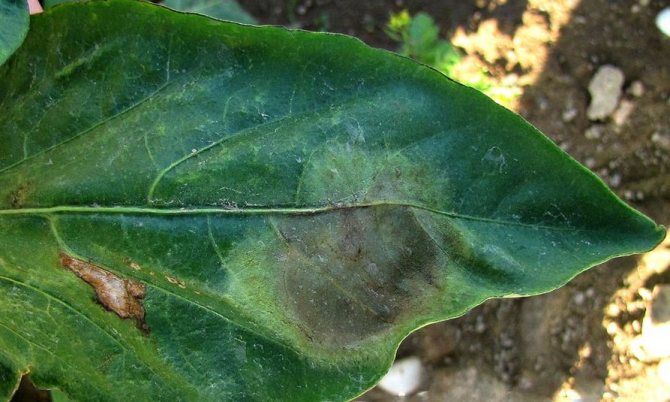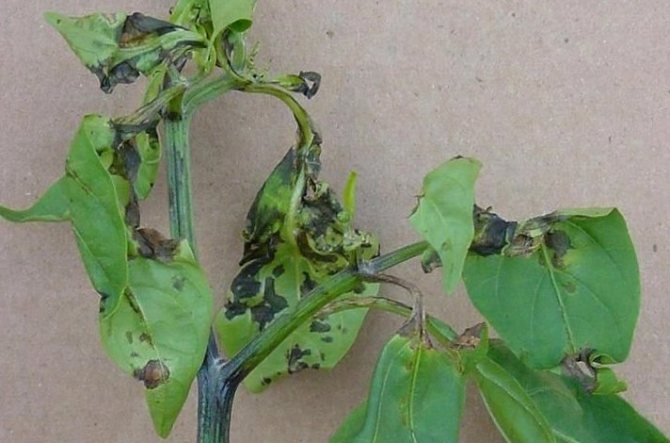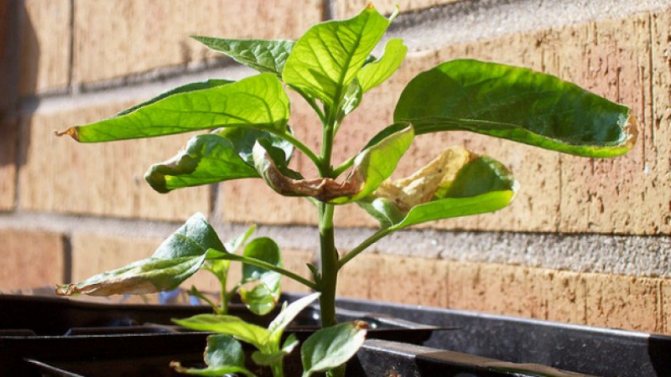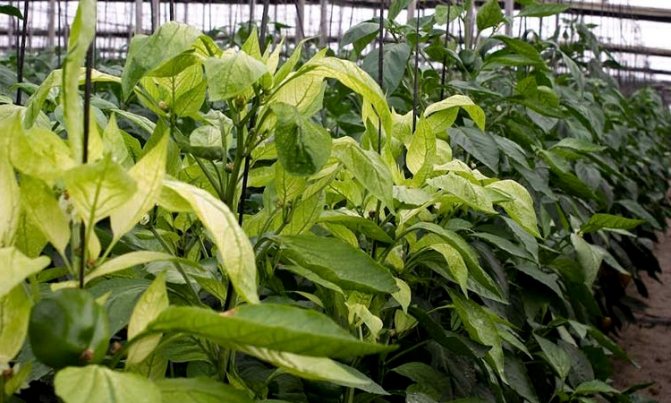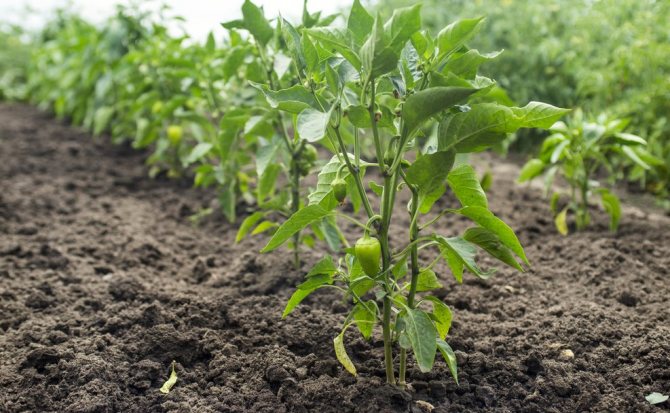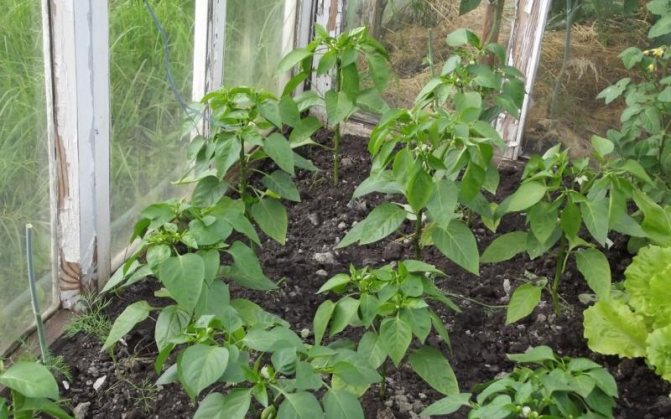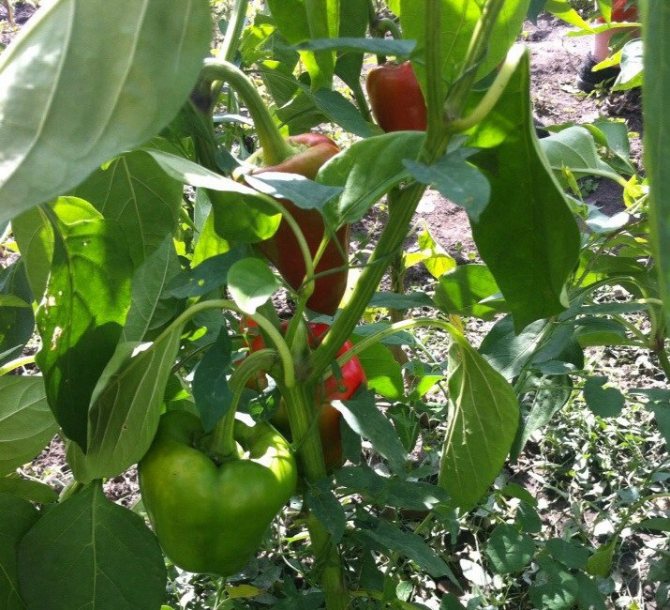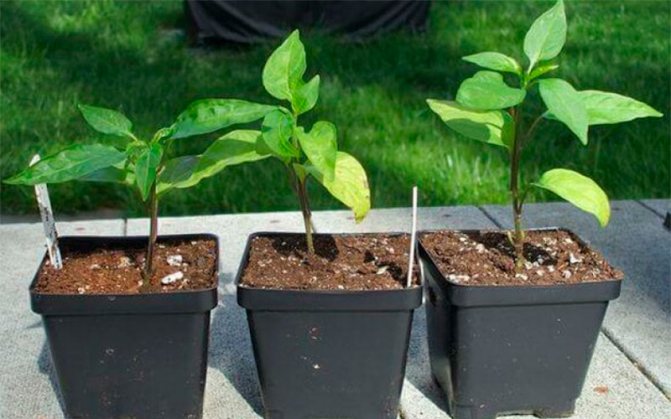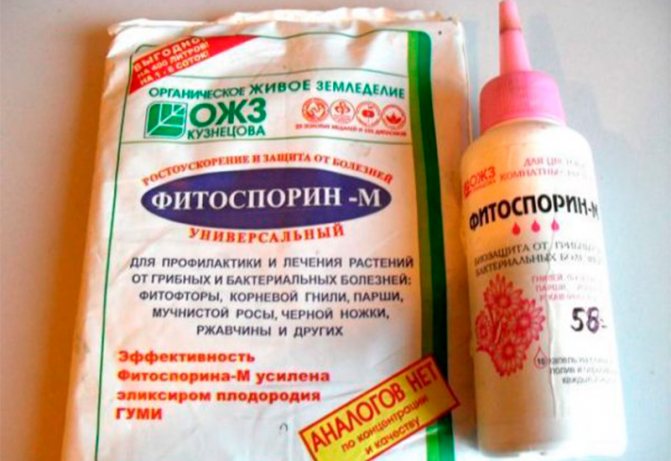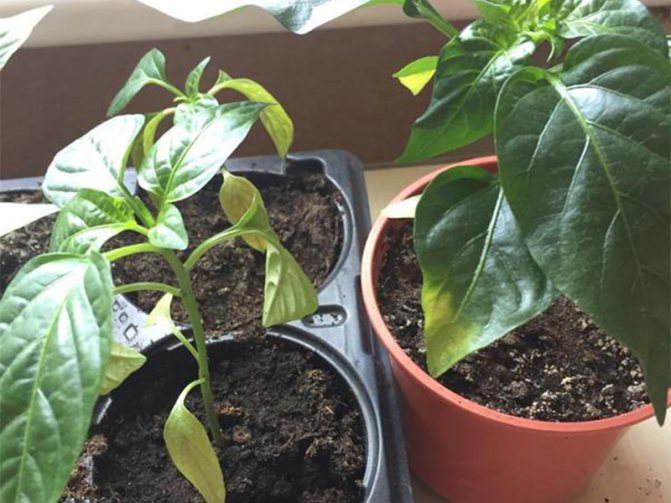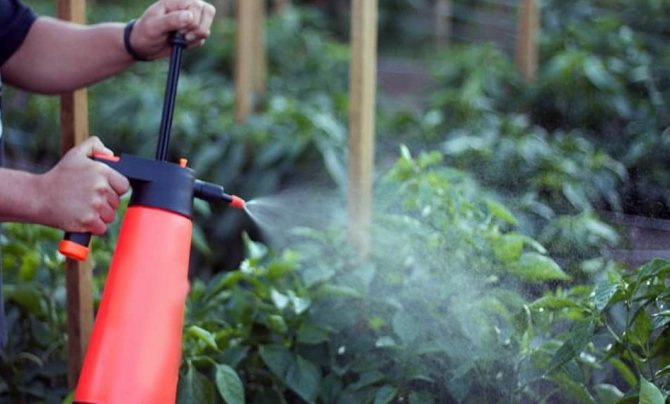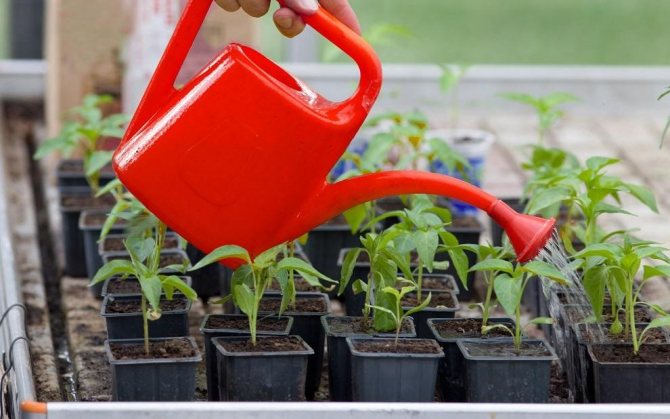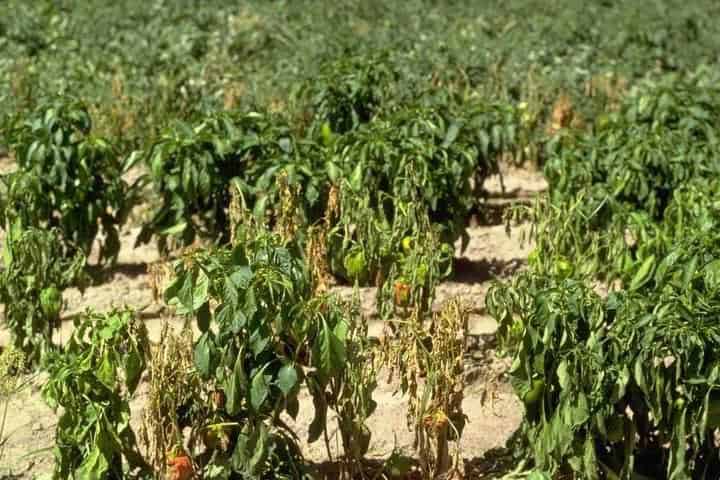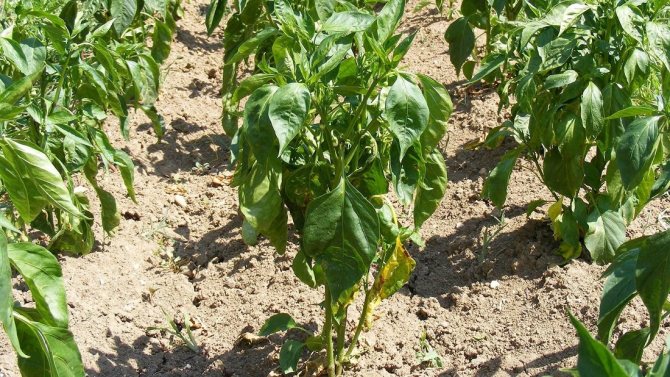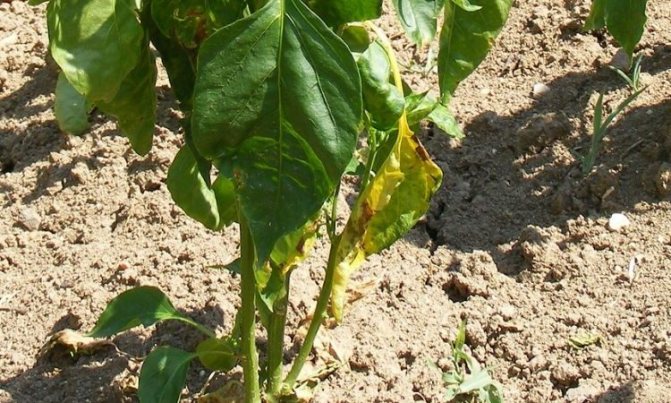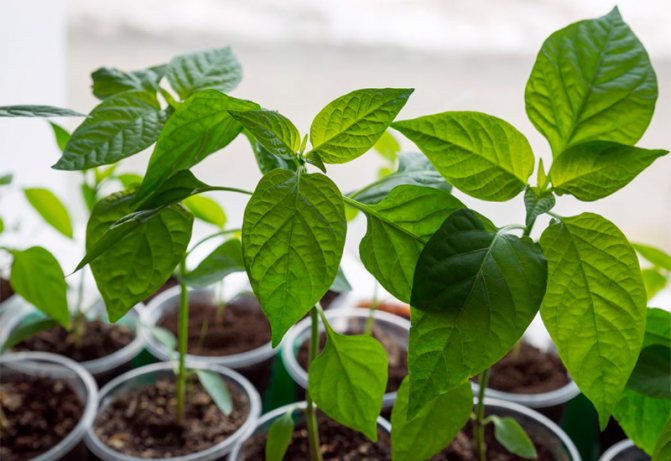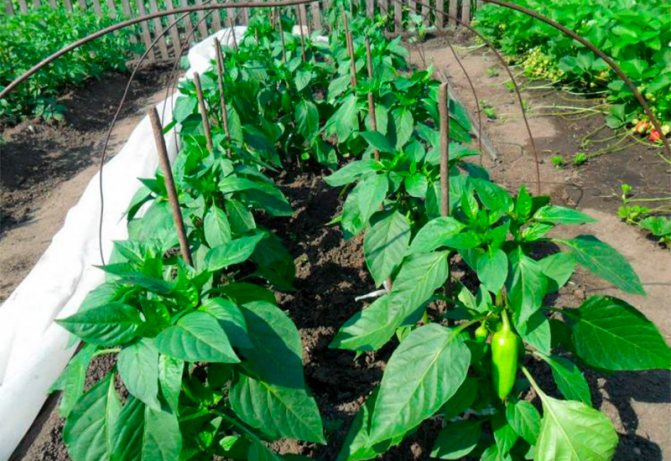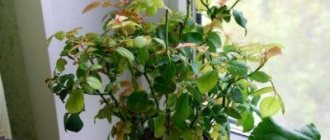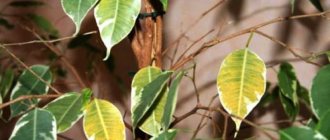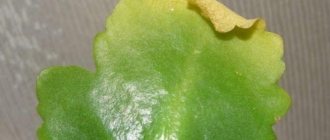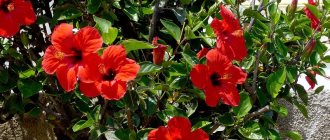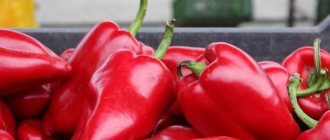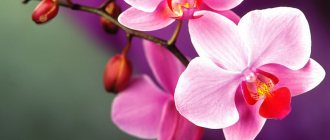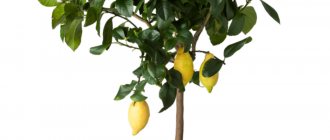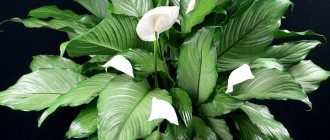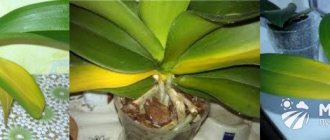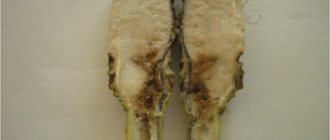Author rating
The author of the article
Yakov Pavlovich
Professor, Head of the Department of Vegetable Growing
Articles written
153
To obtain a rich harvest of bell pepper, you will need to comply with the temperature regime, maintain optimal humidity, as well as soil with certain characteristics. If the leaves of the pepper turn yellow, this is a bad sign, what to do with this and what measures to take depends on the reasons that caused such a reaction of the plant.
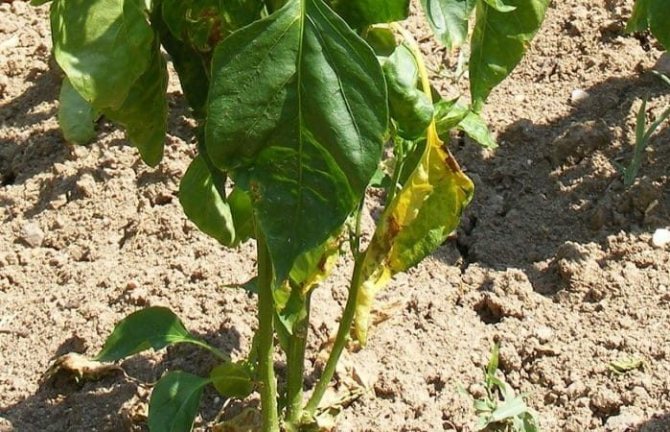
The main causes of yellowing of the leaves of bell pepper
The methods of dealing with the nuisance in the form of yellowing of the leaves are practically the same for adult and young peppers. Most often, seedlings react in a similar way to mistakes made in the growing process.
Irrigation irregularities
For a plant, drought and stagnation of moisture near the roots are equally destructive. When watering with cold water, the root system ceases to absorb moisture and nutrients.
If there is not enough moisture or it is in excess, then the pepper reacts like this:
- withers;
- turns yellow;
- sheds leaves;
- ovaries begin to fall off.
Important! It is impossible to allow waterlogging and drying out of the earth
Watering is carried out as the soil dries up, the optimal time for this is morning, before the bright rays of the sun appear. The water temperature is at least +25 degrees.
Excess moisture contributes to the development of diseases, the lack of an adverse effect on the state of the plant itself (seedlings turn yellow and dry out).
Lack of nutrients
The yellowing of the leaves is caused by a lack of nitrogen, boron, iron, zinc, potassium or phosphorus. Seedlings need nitrogen-containing fertilizers. For plants at the budding stage - potassium. When the ovaries begin to develop in the peppers, they need phosphorus.
Expert opinion
Stanislav Pavlovich
Gardener with 17 years of experience and our expert
Ask a Question
Important! An excess amount of nitrogen in the soil provokes the overgrowth of the peppers. In addition, the likelihood of being affected by aphids increases.
Poor lighting
In insufficient light, the stems and leaves of the peppers are weak, light green, poorly developed, the bushes themselves become crooked, elongated. The optimal daylight hours are 12-14 hours, therefore early planted seedlings (when the seed was sown in January-February) needs additional illumination in the evening and in the morning with fluorescent lamps with a power of 40 to 80 watts.
Temperature drops
A sharp change in temperature causes slower plant growth, yellowing of leaves, and their falling off. Pepper does not tolerate cold below +12 degrees, as well as heat above +32.
Damage to plant roots
Pepper roots can most often be damaged when transplanting seedlings into a greenhouse, open ground. Sometimes unpleasant consequences arise if the soil is loosened carelessly or too deeply. Growing seedlings in spacious cups and careful, shallow loosening of the substrate will help to avoid the problem.
To further strengthen the roots and prevent yellowing of the leaves, it is recommended to fertilize the soil with growth stimulants. It can be "Humat", "Kornevin", "Zircon" or "Epin".
Diseases and pests
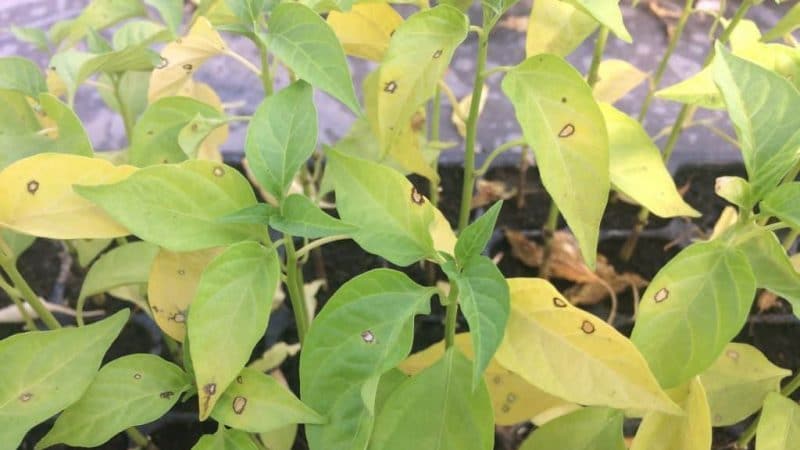

Invasion of pests, diseases are also a common cause of wilting and yellowing of leaves. In this case, the leaf plates curl, bend, ovaries, flowers and even the fruits that have appeared fall off.
Pepper - plant of the sun
The decorativeness of indoor peppers is not at all in flowers, which outwardly very much resemble tomato, potato, or nightshade flowers. It is not for nothing that all these fruit plants are part of the vast family of nightshades! The fruits give it a special appeal: they are bright, as if varnished, of all colors of the rainbow, they flaunt on one plant, like toys on a New Year's tree. It's not for nothing that indoor peppers are often called Christmas!
They are green, red, yellow, orange, purple and even white in color. It depends on the variety and the degree of ripeness. It is interesting that one bush can be decorated with barely set fruits, already half ripe and completely ripe. They also differ in shape: round, oval, bell-like, or cones, some hanging downward, others directed upward, like candles.
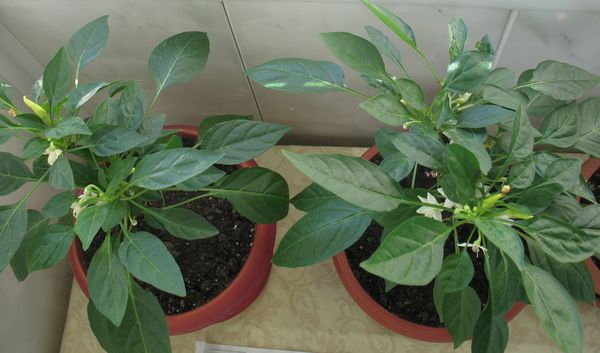

photo of the author
On a note All fruits, regardless of color, are edible. But be careful, this pepper will suit spicy lovers! Moreover, on one plant, green fruits may have a barely perceptible speck, but red ones to taste will be "rip your eyes".
The ornamental pepper familiar to us comes from a Mexican pod brother. The name of this species, capsicum annuum, comes from the Greek word "kapto", which means "to bite" and primarily refers to the pungency of the "biting" fruit. By the way, the substance that causes this pungency is called capsicin! The second word in the name “annuum” translated from Latin means “one-year”, which is actually a mistake. After all, indoor bitter peppers in suitable conditions are able to bloom and bear fruit for 5-6 years.
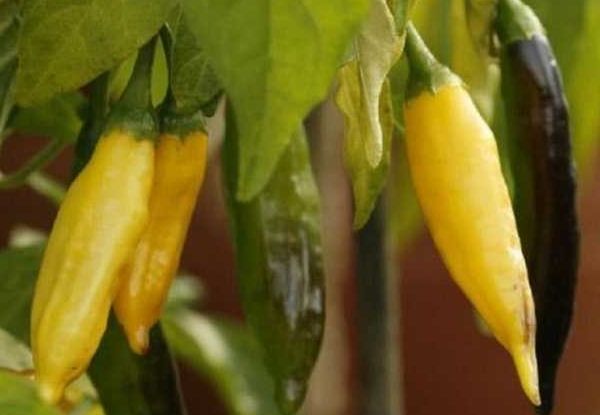

Golden Horn
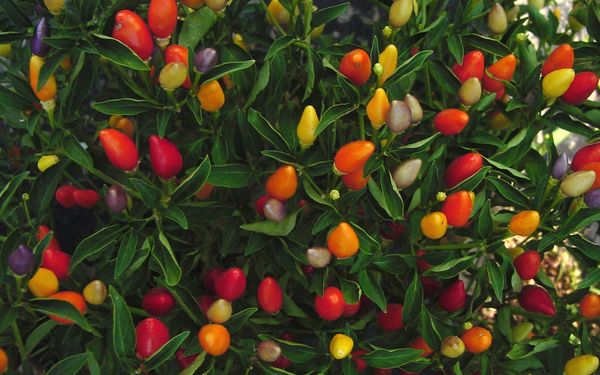

Aladdin
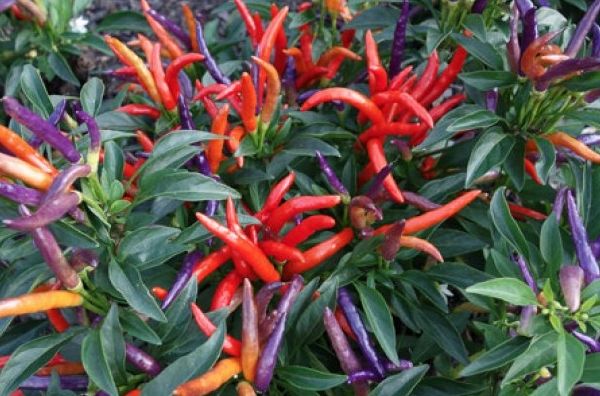

Fireworks
At home, in Mexico, Guatemala and Cuba, the pepper grows into a lush evergreen shrub up to 1 meter high. To the delight of flower growers, there are currently many varieties with a compact bush no more than 50 cm in height and miniature fruits up to 10 cm in length. Usually such varietal peppers are ready in advance for all room deprivations. Depending on the variety, the taste will be different: from sweetish to very hot.
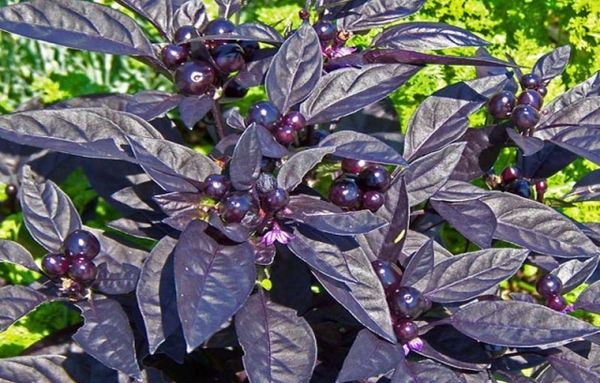

Black Pearl
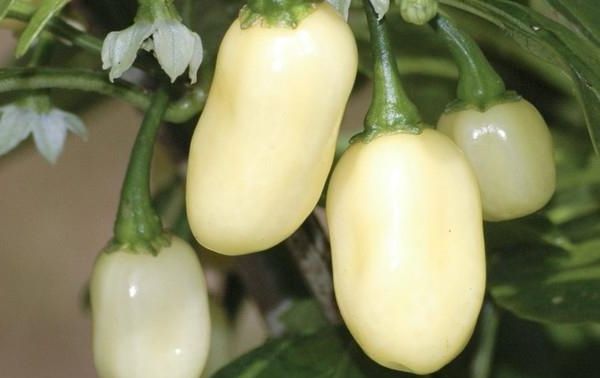

Habanero white
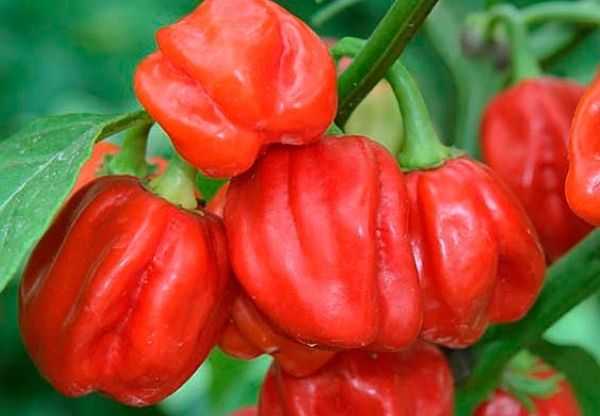

Habanero red
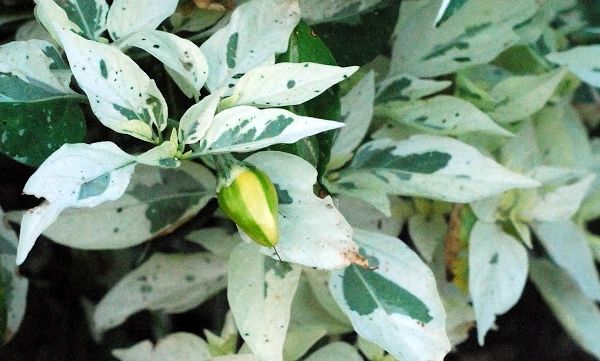

variegated fish
It is not entirely correct to call paprika peppers. Indeed, in fact, this name refers it to the legume family (peas and beans). Real pods are possessed by pepper "peas", which is an evergreen liana up to 10 m long. At the same time, the familiar black "peas" are obtained from unripe pods, and the white pepper is taken from almost ripe ones. But the fruits of Mexican pepper are more likely to belong to berries, like all its fruit relatives from the nightshade family.
Pepper contains a lot of vitamin C, as well as potassium, which is useful for the body. In the countries of South America and Southeast Asia, locals eat it with a bite with the main dish. For Europeans, unaccustomed to such spicy food, it is better to use ground red pepper as a spice when cooking, and use unripe green fruits in a dosed bite.
Interesting An interesting fact from biology is that microbes were discovered thanks to hot peppers. So, the inventor of the microscope, the Dutch microbiologist Antonia Van Leeuwenhoek decided to find out why the pepper "bites". Putting the pepper chunks in water to soften, and then looking through the microscope, he was incredibly surprised. The scientist supposed to examine thorns and thorns on the surface of the fruit, but found microbes ...
Why do leaves turn yellow in seedlings
There are several reasons for the yellowing of leaves in seedlings:
- low quality planting material;
- improperly selected substrate;
- lack of light.
Poor quality planting material
The main criterion for choosing seeds is their shelf life. If the planted seeds do not sprout well, that is, there are very few seedlings, you will need to buy new seed material and plant it again.
Wrong choice of soil mixture
Ordinary garden soil often contains bacteria that cause plant diseases as well as pests. To destroy pathogenic microorganisms, the garden soil must be frozen before use, and then calcined in the oven and spilled with a weak solution of potassium permanganate (1 g of potassium permanganate per 100 ml of water).
The best will be a soil consisting of:
- ordinary soil (3 parts);
- vermicompost (1–2 parts) - a product of the vital activity of worms, pure, complete fertilizer;
- coconut substrate (0.5-1 part) - to retain moisture, but root rot develops from its excess.
Lack of illumination
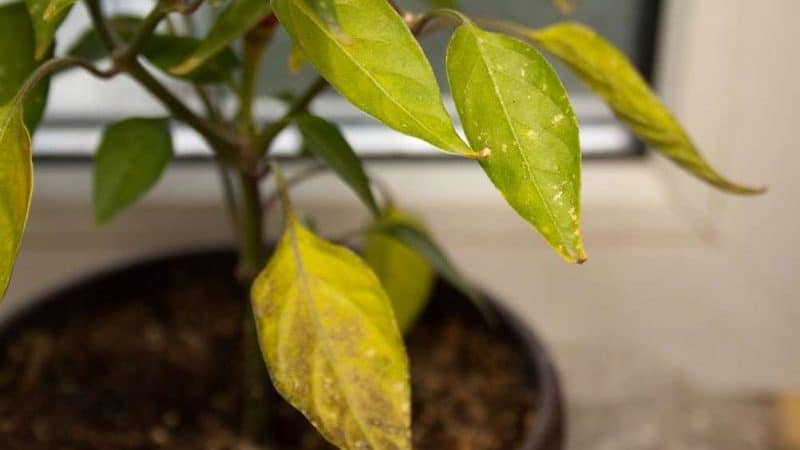

In January-February, the seedlings on the windowsill lack light, so at this time it will not be possible to grow healthy, strong peppers without additional highlighting.
Expert opinion
Stanislav Pavlovich
17 years of experience gardener and our expert See also Compatibility of peppers and tomatoes in the same greenhouse - can they be planted together
Ask a Question
Important! The sun's rays can harm the root system (slowing down its growth), so you need to grow seedlings in opaque containers.
Cold windowsills
Prolonged exposure to a draft in combination with irrigation with cold water causes the active absorption of nutrients from the soil by the upper leaves. The lower leaves feel a deficiency of useful elements and begin to dry out.
Leaf plates turn yellow and fall off at temperatures below +12 degrees. Optimal for seedlings of peppers is a mode from +20 to +25 degrees. At temperatures above +35 degrees, the sprouts die.
Wrong pick
If the roots are damaged during the picking process, then the plants turn yellow, since transplanting to a new place is stress for the seedlings. Planting together with a lump of soil mixture in which the peppers grew will help prevent the problem.
Overflow
To correct the situation with excessive watering will help the termination of watering or transplanting seedlings into a new soil mixture, previously spilled with a solution of potassium permanganate. The root system of the seedlings can also be washed very carefully with potassium permanganate before placing in new soil.
Using cold water
Watering with cold water causes seedling diseases. Before use, the water must be slightly warmed up (up to +25 degrees).
Important! During watering, there should be no abrupt changes in the temperature of the soil, water and air.
The leaves will also be yellow and will begin to dry out if the soil is waterlogged, with a lack of light, or in the case of sowing into untreated soil from the backyard (larvae that feed on plant roots remain in the soil).
Lack of moisture
Signs of moisture deficiency are yellowing of the lower leaves and their fall off in initially strong, healthy shoots.
Expert opinion
Stanislav Pavlovich
Gardener with 17 years of experience and our expert
Ask a Question
Important! Spraying cannot be substituted for standard watering. Thin and fragile roots of seedlings will suffer from the pressure of a dry clod of soil, since when spraying, moisture settles on the plant itself and on the surface of the earth.
In addition, spraying masks the lack of moisture in the soil, moisturizing its surface. Experts recommend watering pepper seedlings often and little by little to prevent the soil from drying out.
Dry air
Insufficiently humidified indoor air (up to 40%), as well as insufficient watering, increases the fertility of the spider mite. It will help to avoid the problem of spraying or containers with water next to the seedlings.
Pests
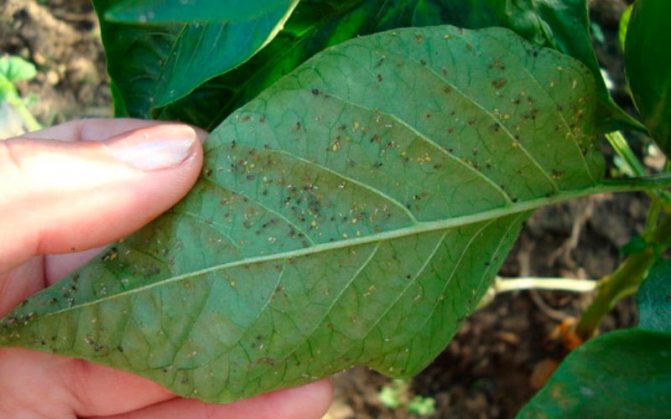

Pests such as spider mites and aphids are especially dangerous for seedlings.
Spider mite
Pest infestation is indicated by small silvery-yellow dots, resembling needle pricks, located on the back of the leaf plate. The last stage of infection is the plaiting of leaves and stems with cobwebs.
Aphid
The pest feeds on plant juices, as a result of which the leaves become lethargic, turn yellow, curl and dry out.
Signs of infection:
- sticky drops with a viscous liquid on the stems and leaves;
- egg clutches and insects themselves are visible on the lower part of the leaf plates.
Infection
The defeat of the black leg is manifested in the decay of the plant stem, as well as in the yellowing and twisting of the leaves. The pathogen lives in the soil. The method of struggle is the treatment of the root system with "Fitosporin" and transplantation to another place.
Treatment methods
If the leaves of sweet peppers turn yellow and fall off? To save plants from yellowing and disease, you need to pay attention to risk factors. If the lower or upper leaves have already turned yellow, then special care rules can help:
- Increased watering - if the top layer of the earth is dry and disintegrates, this can provoke the factor that the pepper has turned yellow, it is necessary to water it with a small amount of water every 3-4 days;
- Reducing watering - if you overdo it and water the plants every day, then you need to return to the watering regime every five days;
- Adding macronutrients or balanced fertilizers - you need to purchase an organic fertilizing complex and evenly distribute among the plants on the soil;
- Maintaining an optimal balance of temperature - the normal temperature is 25 degrees, and you also cannot water the seedlings or already planted peppers or eggplants with cold water, only warm and it is desirable to plant it;
- Closing the window with paper sheets or cardboard - if the plants turn yellow at the seedling stage, then at home there is always the opportunity to protect the plants from excess sunlight;
- Spraying from pests - pests can settle in the soil, so you need to spray bell pepper bushes with organic solutions from time to time, which will help strengthen the resistance of the plants;
- Correct planting - if possible, then each plant should be placed in a separate pot at the seedling stage, and when planted only in a well-lit area.
Improper care is the very first reason for yellowing of the leaves of salad peppers. Simple rules of prevention and treatment will help you get a high-quality harvest and healthy plants. If you find the right approach to each vegetable, then any pepper bush will delight you with good fruits in a short time.
Seedling rescue measures
Seedlings can be reanimated, even if any of the growing conditions were violated and the peppers began to react with yellowing of the leaves.
With a lack of nitrogen
Pepper does not like excess nitrogen in the soil, however, the lack of this element also affects the plants adversely: the lower leaves turn yellow. To eliminate the deficit, it is possible to lay one granule of "Azogran" fertilizer under each plant.
Cotyledon leaves turn yellow
If the seedlings already have two or three true leaves, and the cotyledons have turned yellow, then there is no reason for concern.
Expert opinion
Stanislav Pavlovich
Gardener with 17 years of experience and our expert
Ask a Question
Important! Yellowed cotyledonous leaves are the norm, since after fulfilling their functions, they die off.
The cotyledons turn yellow in the absence of true leaves when irrigated with cold water. You will need to dry the soil a little, and then water the seedlings only with settled, warm water.
With excessive moisture
With waterlogged soil:
- watering must be stopped for several days;
- loosen the soil carefully;
- provide drainage (for example, excess moisture draining into the sump);
- if you suspect the appearance of rot on the roots - pour the soil mixture with "Fitosporin" (solution).
Additional lighting for seedlings planted too early
To provide a sufficient amount of light (the minimum duration of daylight hours for peppers is 12 hours), fluorescent, LED or phytolamps are used.
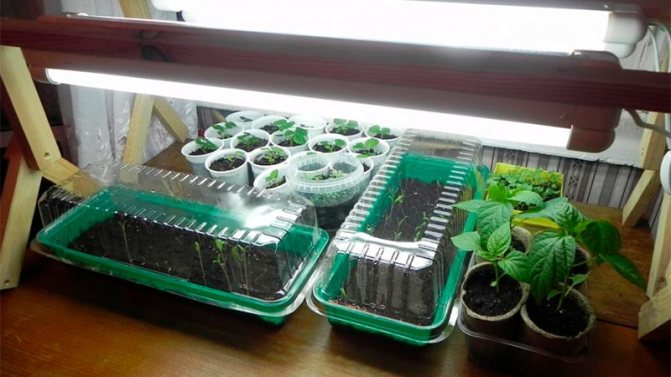

Stands for containers with seedlings
On the windowsill, containers with seedlings should be placed on supports. These can be polystyrene sheets or wooden gratings. This will prevent freezing.
Expert opinion
Stanislav Pavlovich
Gardener with 17 years of experience and our expert
Ask a Question
Important! In severe frosts, the sprouts will need to be removed from the windowsill, but the minimum daylight hours should still be 12-14 hours.
Wooden grates
You can save the seedlings on the windowsill from the cold by placing containers with plants on wooden trellises.
Styrofoam sheets
Foam sheets are used to protect against hypothermia. They need to be placed on the windowsill, and a container with seedlings should be placed upstairs.
Shading on hot days
Peppers need shading in hot weather. Seedlings can be protected from direct sunlight by covering the glass with a thick cloth, cardboard or foil.
See also Pale leaves of pepper: how to treat and how to feed seedlings
Spraying pests
If there are aphids on a small number of bushes, washing the leaves with soapy water will help (take 10 liters of water for 100 g of soap). After that, an insecticide treatment is required. Garlic tincture will scare away pests. You will need to chop one head of garlic, mix with water and let it brew for 24 hours. Then dilute the mixture with water and sprinkle with pepper.
The detected pests can be destroyed with Fitoverm or Vermitic insecticides.
Fitoverm
The drug is effective against all types of aphids and spider mites. It works 6–8 hours after treatment and protects plants from repeated attacks of pests for 7–20 days.
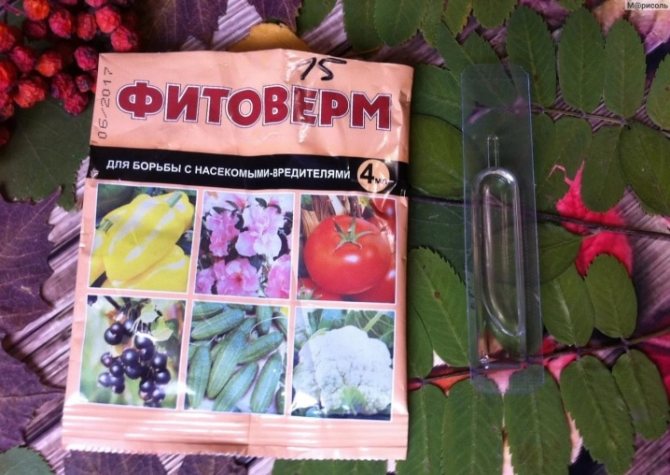

Vermitec
It is recommended in the fight against spider mites, penetrates into plant tissues in a maximum of 2 hours, the effect is noticeable within a day. Protects against repeated insect attacks for 21 days.
How to treat black leg
If symptoms of black leg are detected (a fungal disease affecting seedlings), when the lower part of the stem has become thinner, and the leaves themselves have turned yellow, you will need to add pre-calcined river sand to the seedlings and water the soil mixture with a solution of potassium permanganate. The potassium permanganate solution should be pink.
Sowing in separate pots
It is recommended to sow the seeds in separate pots or cups, and as soon as the seedlings grow a little, you can move them away from each other. This will provide the plants with sufficient light.
Expert opinion
Stanislav Pavlovich
Gardener with 17 years of experience and our expert
Ask a Question
Important! When planting in common seed boxes, transplanting is recommended only after the first pair of true leaves appear.
Hardening before transplanting to a permanent place
In order to strengthen the immune system, it is recommended to spray the seedlings with "Epin" or "Zircon" before transplanting them to a permanent place. Tempering is also required.
Yellowing of peppers outdoors
The reasons for the yellowing of plants in the beds are similar to those that lead to problems in greenhouse peppers. But there is also some specificity:
- water scarcity. It is observed in hot weather, with irregular watering and no precipitation. Peppers instantly react by changing color, wilting of leaf blades, discoloration and ovaries;
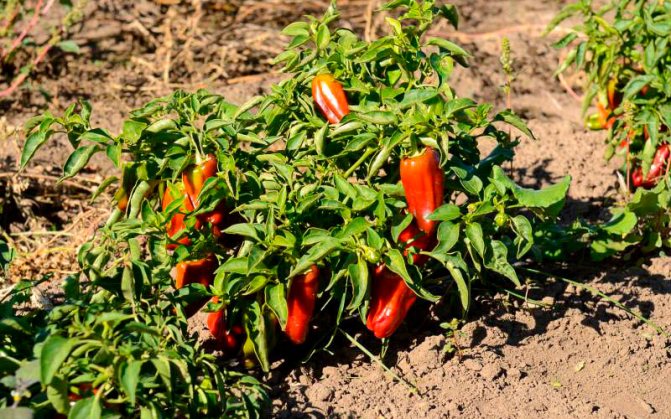

- cold snap. The Russian climate is unpredictable, and cold snaps are possible even at the height of summer. When the temperature drops to + 12ºC, the roots stop working, the plants stop growing;
- deficiency of certain nutrient components.Most often, there is not enough calcium on the ridges, which leads to the appearance of yellow spots on the peppers, deformation of the leaf;
- excess light. With an excessive amount of sun, the processes of decomposition of chlorophyll are accelerated at times, which leads to pale foliage;
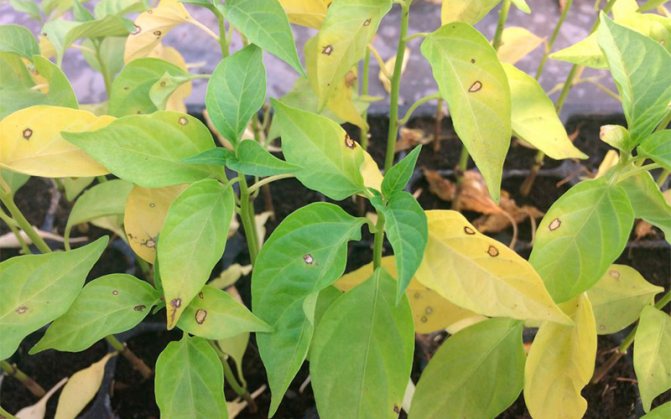

- pest attacks. Along with spider mites, peppers on ridges infect wireworms, moth larvae, thrips, Colorado potato beetle;
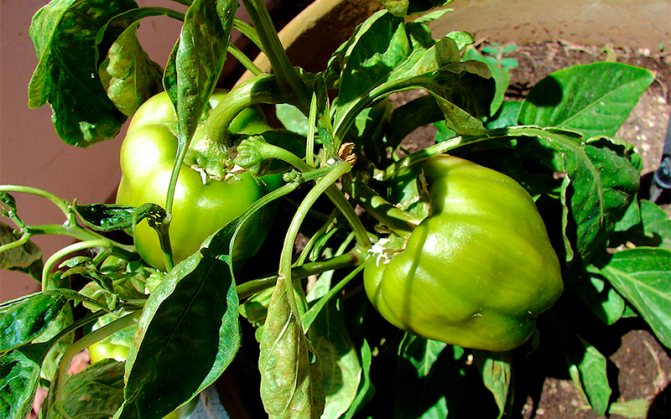

- disease. On the ridges, there is a high risk of damage to plants by various types of rot, fusarium, stolbur.
What to do if greenhouse pepper leaves turn yellow and fall
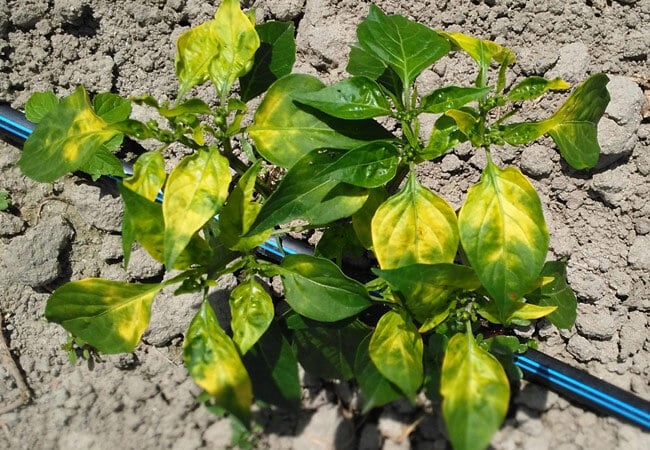

In the greenhouse, yellowing of the leaves of peppers is observed mainly due to a lack of nutrients in the soil necessary for the normal growth and development of plants:
- With a calcium deficiency in the leaf plates, the edges turn yellow, later the leaves can curl. Foliar top dressing with potassium nitrate will help to eliminate the problem (2 parts of saltpeter will need to be diluted with 1 part of water).
- The lack of iron manifests itself in the form of yellowing of the foliage from the middle and the appearance of characteristic veins at the base of the leaf plate, while the tips remain green. Spraying iron sulfate on the top of the plants will fix the problem. The rest of the solution can be poured over the soil near the bushes.
- Boron deficiency leads to a curvature of the base of the leaf plates, after which they turn yellow. Due to the insufficient amount of boron in the soil, the yield decreases, since the fruits do not set well. To eliminate the deficiency, it is necessary to mix boric acid with water in a 1: 1 ratio and spray the plants.
- With a lack of manganese, the veins on the leaves remain green, and the leaf plates themselves turn yellow. If you do not take action in a timely manner, then the processes that are below will first dry out, and later the upper ones. Spraying plants (seedlings) with a solution of 10 liters of water and 5 g of manganese sulfate (ordinary potassium permanganate) will help.
After feeding, the leaves will stop fading. But the effect in the form of a complete restoration of the appearance of the peppers will be noticeable only after 7 days, since the nutrients are slowly absorbed by the plants.
Insufficient nutrients
Often, yellowing of peppers, their stretching, as well as thinning of the stems occur with a deficiency of nitrogen, as well as iron (the leaves themselves turn yellow, and the veins remain green).
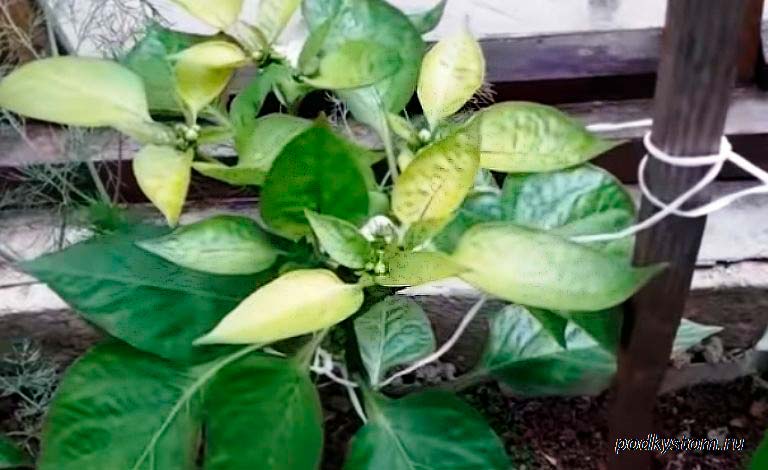

We add nitrogen with urea or ammonium nitrate, and replenish the iron with such preparations as Micro-Fe, Ferovit. We are engaged in this morning or in the evening, having shed the bushes well prematurely.
What can be done if sweet pepper leaves turn yellow and fall in a greenhouse
After the cause of the yellowing of the leaves is identified, it is necessary to eliminate it.
Expert opinion
Stanislav Pavlovich
Gardener with 17 years of experience and our expert
Ask a Question
Important! When using any chemical agent, the dosage must be strictly observed.
Chemicals used for yellowing pepper leaves:
- "Agrovit", "Kemira" and iron vitriol are effective in replenishing the deficiency of manganese and iron.
- With a lack of iron, manganese, boron, zinc, sulfur, non-infectious chlorosis develops - the leaves turn yellow with green veins. In this case, feeding "Kristallon", "Tsitovit" or "Humat +7" will help.
- Seedlings will take root better in open ground or in a greenhouse if they spray it with Epin a day before transplanting (plant immunity will increase). The same remedy is recommended when sunburn occurs on the leaves.
If the pepper sheds the lower leaves, then this indicates an overly dense planting. That is, the plants are planted too close and shade each other.
Typical reasons
There are factors affecting the fall of the foliage of the seedlings, which are characteristic of a particular growing method: greenhouses and open ground.
For greenhouse
In greenhouse conditions, a special microclimate is created in which pests and diseases develop well.Also, the condition of the pepper is affected by lack of space and poor ventilation.
The main reasons for the falling foliage of pepper seedlings in the greenhouse:
- fungal diseases;
- dense planting;
- lack of ventilation;
- waterlogged soil;
- strong drafts.
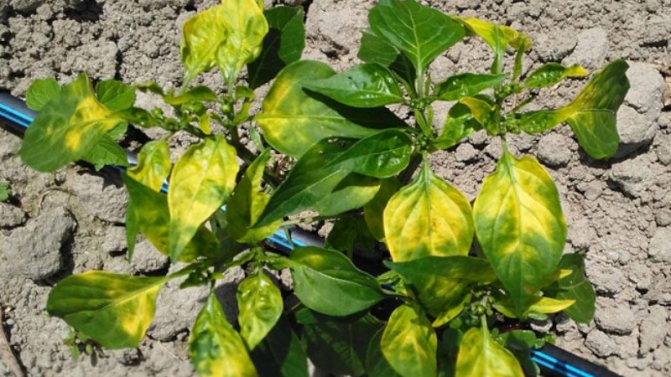

For open ground
When the seedlings are indoors, they are not affected by drafts, frost, heat and rain. In order for the seedlings to take root in the open field, it is necessary to regularly harden them.
The following factors can lead to leaf fall:
- cold water;
- lack of nutrients;
- adverse weather conditions;
- stressful condition after transplant;
- early transplanting in open ground;
- direct sunlight;
- diseases and pests typical for open ground.
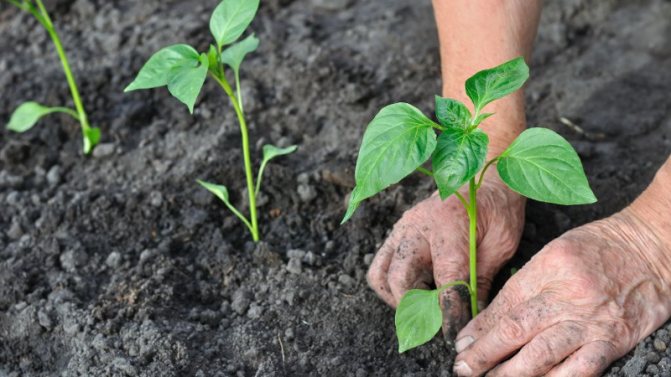

Prevention measures
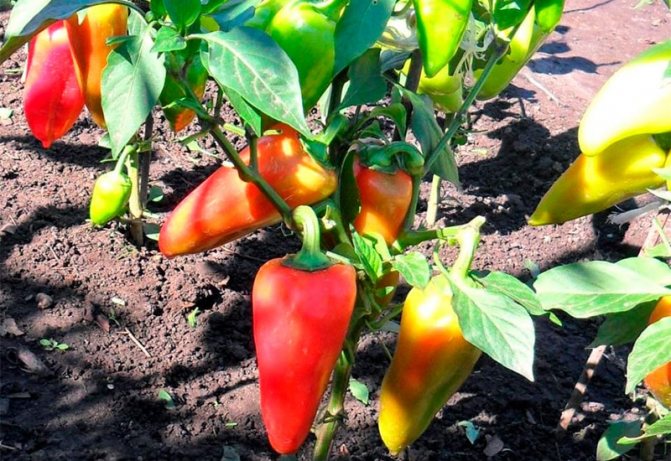

To help pepper plants grow normally, as well as to prevent yellowing and falling leaves, preventive measures are used:
- Digging up the earth in the fall, combined with the complete removal of plant residues and disinfection of the soil, household equipment, and the greenhouse itself.
- The planted seedlings must be strong and healthy.
- Disinfection of seed material before planting.
- Crop rotation.
- Correct watering, timely feeding.
- Preparing the soil before planting seedlings.
How to save pepper
As soon as you see that the leaves are crumbling, follow the recommendations:
- Treat the pepper with the Zircon preparation - an immunomodulator will help him cope with a stressful situation.
- Determine the cause of the falling leaves.
- Eliminate her.
- If leaf fall is caused by an incurable disease, urgently remove all affected bushes and burn them. Treat healthy plantings with any complex fungicide (Gamair, Planriz, Baktofit, Oksikhom).
- It is easier to fix errors in care - water with warm water, transplant into the correct soil, feed with the missing element.
- Testing with changeable weather can be predicted by knowing the nearest forecast. It is better to plant seedlings after May 20. If it gets colder in June, cover the seedlings with lutrasil at night.
Additional tips and tricks
To prevent yellowing of the leaves, it is necessary to water the bushes only with warm water, planting seed in fertile soil and the absence of drafts. Plants should be in the sun for at least 12-14 hours. Seeds need to be treated before planting, and the soil needs to be disinfected.
Previous
Pepper dressing after planting in the greenhouse: what fertilizers and when to use
Next
Diseases of bell peppers and bitter peppers: treatment and prevention
Growing problems?
Peppers, which, as we have found out, are not difficult to grow, can sometimes be depressed. Moreover, the symptoms are similar to those of open ground plants.
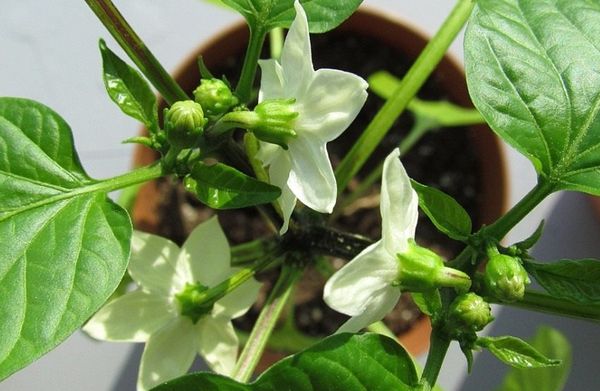

photo of the author
- If the pepper drops flowers and buds ...
This behavior can be a signal of a deficiency of trace elements in the pot, whether it is due to a lack of free soil, or rare fertilizing. During the active growing season, the bushes quickly master the substrate in the pot, entangling it with roots and "sucking" useful substances. This can be prevented by transplanting into new soil and a slightly larger pot, or by timely regular fertilizing with organic matter and mineral mixtures. In addition, many varieties require manual pollination at home. Do not be too lazy to devote a few minutes to this process, because the result will surprise you: the number of ovaries will increase significantly and the buds will stop falling off.
Also, proper care affects the formation and even the taste of the fruit: watering, feeding, temperature and light.
- If the pepper leaves turn yellow and fall off ...
The lower leaves can turn yellow as a result of a natural process against the background of the growth of new ones. However, indoor peppers do not like excess light and fertilizers.Healthy and young leaves can lose color in the hot midday sun, in a stuffy room (in this case, they also quickly lose moisture). So overfeeding, which is, in principle, dangerous for plants, can affect! Heavy leaf fall can be observed in winter, especially if the peppers are kept in low light and high temperatures. By the way, this kind of wintering, most likely, will lead to deformation: by spring the bush will grow long and low-leafed.
- If the tips of the leaves darken on the pepper ...
Ornamental pepper leaves are quite tender and react quickly to changes: excessive or insufficient watering, temperature fluctuations, illumination, the content of minerals in the soil, the quality of water for irrigation. Therefore, the cause can only be determined by analyzing the conditions of detention: perhaps you often bring the soil to complete drying, or at night the temperature on the balcony dropped to minimum values, or you are using non-settled water for irrigation.
One should not exclude such problems as various kinds of diseases that can overtake a bush in damp and cool conditions, or attacks of pests that choose weakened plants.
Indoor pepper, the cultivation of which is described in this article, is not only a spectacular decoration of the windowsill, but also a unique spice for lovers of "sharper".
Support our site, share the link on social networks. Thank you!
Watering errors
92% of the composition of the pepper is water, and the root system of its seedlings is not at all deep. This suggests that the plant needs a lot of moisture, therefore it is necessary to water it often and abundantly.
The soil should be moistened 15-20 cm deep. Insufficient watering and drying out of the soil can adversely affect your "pupil".
The vegetable will "inform" you about the lack of moisture by its appearance: the pepper will begin to turn yellow and shed its leaves. The next signal is the falling of flowers and ovaries. The seedlings look depressed and lethargic, their stems become soft and pliable.
Even if fruits grow on it, they will not differ in presentability, healthy appearance and taste.
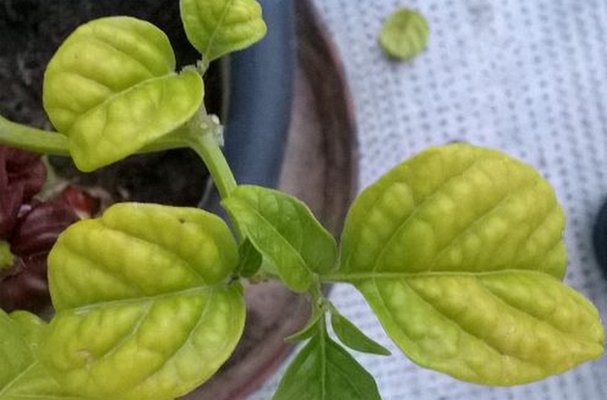

Prolonged periods of drought can pose a deadly threat to seedlings and adult units. Experienced gardeners advise to water the plant daily in the morning.
On rainy days, reduce hydration to once a week. It should be remembered that excessive soil moisture is also fraught with seedlings of peppers and can lead to blackening of foliage, decay of roots and stems.
Important! The best way to implement watering is to pour water from a hose directly under the root. If moisture gets on the leaves, it can linger there and provoke the appearance of microbes and pests. The water should be warm, about 25 ° C.
Preventive measures
It is good when there are means for treating diseases or destroying pests, but it is still better to take protective measures in advance. Prevention is much better than any cure. There are several measures for preliminary protection against various disasters:
- harden the seedlings before planting;
- choose places with diffused lighting, light and fertile soil;
- do not plant peppers in places where other nightshades grew;
- fertilize the soil regularly;
- provide the land with biological protection before planting.
Gardener Tips
We have collected for you tips from experienced gardeners who have long been growing peppers in their garden plots:
- grow seedlings yourself or purchase them from trusted people;
- soak seeds in potassium permanganate before planting;
- before planting, spill the soil in the greenhouse and the beds in the garden with a strong solution of potassium permanganate;
- loosen the soil after watering;
- ventilate greenhouses;
- water only with warm water and regularly feed the peppers;
- buy proven, resistant varieties.
Proper care of pepper seedlings
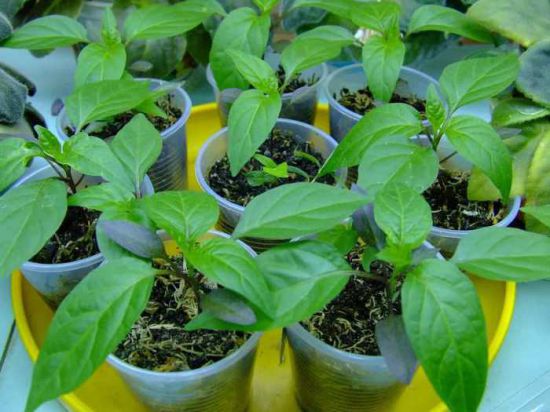

For seed germination, a temperature of over 22 degrees is required. In this case, seedlings can be expected in 7-12 days.All this time, the seedlings should be under a film cover. It must be ventilated daily and, if necessary, moistened with a spray bottle. After emergence, the film is removed and the container is exposed to light. It is advisable to maintain a temperature of about 20 degrees at this time, if it is too warm, the seedlings will begin to stretch.
The room needs to be ventilated, but drafts should not be allowed. Seedlings that emerged in February are illuminated from 8 am to 8 pm. The rest of the time, the pepper should be under an opaque material. Such agrotechnology contributes to the hardening of the culture and earlier fruiting. March seedlings are illuminated in the evenings until the moment of picking, placing lamps at a distance of 60 cm from the plants in order to avoid burns.
Every 2-3 days, the box with seedlings is turned the other side to the window so that the bushes do not bend. Pepper needs abundant watering after the topsoil dries out. It is especially important to regularly supply moisture during flowering. Very small seedlings are sprayed at first. Watering should be carried out in the morning so that the soil has time to dry out slightly before nightfall. The water should be kept warm.
When the first pair of true leaves appears, the peppers must be dived, if before that they grew in a common container. It is in this phase of growth that plants will better take root in new soil. A few days before the pick, the peppers are fed with a solution of calcium nitrate at the rate of 1 tbsp. l. for 10 liters of water. Top dressing must be applied to wet soil. Two hours before the pick, the soil is moistened so that the earth does not crumble from the roots. New containers should have a volume of 1 liter.
After transplanting, the plants are watered and removed to a shaded place for 1-2 days. It is enough just to cover the window glass with paper. Care for dived seedlings consists of watering, fertilizing and hardening before planting in the ground. Watering is made more rare, but plentiful (once every 5-6 days).
The peppers are fed with ash infusion, complex mineral fertilizers, yeast infusion and banana peel. Top dressing is carried out once every 2 weeks, focusing on the appearance of the pepper. If the plants look strong and healthy, the top dressing can be skipped.
Hardening begins 2-3 weeks before planting plants in open ground, bringing seedlings to the open air for a short time. The time spent on the street is gradually increased daily. This procedure can be carried out at a temperature of at least 15 degrees. It is imperative to take into account the weather conditions and postpone the hardening procedures when a sharp cold snap occurs.

